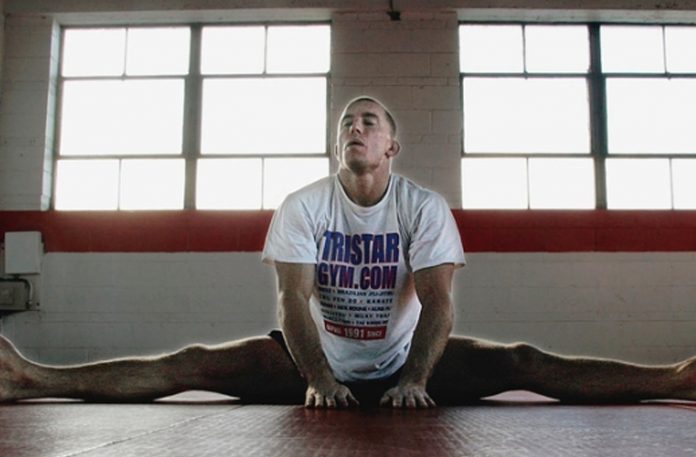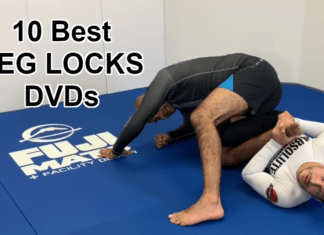
Grapplers around the world usually engage in stretching exercises after they workout. However, most grapplers never give stretching much thought. They look to stretch “by feel” or use stuff they’ve learned in primary school physical culture class. What BJJ people fail to comprehend is that Jiu-Jitsu put the body under very specific stress. As such, recovering from it should also be addressed in a specific manner. MIndless stretching is only going to lead to injuries that often become chronic. Stretching for BJJ is essential for bot ha a long grappling career and a versatile game. Doing it incorrectly, though, is only going to get you into trouble. So, let’s rectify some f the most common stretching mistakes.
To begin with, let’s get the most obvious out of the picture. Stop stretching during your warmup! It is a proven way to cause injury to yourself. Secondly, always make sure you stretch after you finish rolling or doing conditioning. And finally, focus on what is important when you do so. Stretching fro BJJ is as important as technical work. although full body stretching sessions area advisable (think yoga), it is not always possible to fit them into a busy schedule. So, the best thing to do after grappling is stretch those muscle groups that have gotten a real beating. Coincidentally, these are also the muscles every grappler should look to make as flexible as possible.
Increase You Flexibility With Yoga For Jiu-Jitsu: https://bjj-world.com/yoga-for-bjj-benefits/
Stretching For BJJ: Hamstrings
Nothing is more predictable than the sloppy bent-over standing hamstring stretch. People usually lift their foot up onto an elevated surface and round their spine. Then, they look to reach over and grab their toes. Most think they’re doing something healthy and productive. He really is that they’re only opening themselves up to several orthopedic problems, mainly In the lower back area.
A standing hamstring stretch brings about that “feel-good” effect which is why people think they’re doing something good for them. This feeling is triggered by the muscle responding to the stretching motion it is going through. There’s nothing wrong with feeling good during a stretch, but not at the cost of an injury. When the stretch jeopardizes spinal integrity you’re stretching your way toward pain rather than away from it.
The ability to touch your toes depends on the functional length of the hamstrings, as well as a host of other factors. A major one is the ability to control and stabilize the position of the pelvis. Another important thing to consider is t controllable range of motion at the segments of the spine.
If you suck at the toe touch and have focused on your standing hamstring stretching after BJJ for months with no results, then drop it. Be smarter about the methods you’re using. Don’t worry, you can still get your stretch on, but change your methods. When it comes to stretching for BJJ, the best method is a supine 90-90 active hamstring stretch. This brings you the ability to stabilize both the spine and pelvis in a neutral position against the floor. It is a great way to engage the hamstrings without putting the rest of your body under unnecessary strain.
Hip Flexor Stretches For Grapplers
Chronic sitting turns the front side of our bodies into a functionally shortened mess. In this mess, the hip is the region that suffers the most. Hip flexors, both the superficial and deep muscular layers are severely affected. Most grapplers are aware they sit too much during the day, and they know their hips are tight as a result. Since hips play an integral part in Jiu-Jitsu, being able to mobilize them is of immense importance. However, looking to stretch a muscle that has been getting progressively tighter for years is the recipe for a disaster. Although it sounds reasonable, stretching the hip flexors is not the way to make them more mobile for grappling.
The most usual position you see people getting into to stretch their flexor after rolling is the half-kneeling position. You know what’s good about this position? Nothing at all! Forcing the hip into ultra- extension with your shin lodged up against a wall while your spine is smashing itself into hyperextension should not be the goal. Not only does this position hurt (and no that is not a good thing to feel) but it’s ineffective. A high degree of injuries often occurs as a result of this erroneous approach to stretching for BJJ. Extending the maximal range of motion by the use of compensation from other tissues is dangerous when done repeatedly.
When you stretch, look to maintain a neutral position in the joints and spine. This way,m you’ll be able to isolate the tissues you’re working on. The half-kneeling position should make you achieve centered and neutralized joint positions at the shoulders, hips, and spine. So next time you do this stretch, pay attention at these tips:
Upper Body Stretching For BJJ
If you’ve never had your training partner grab your arms and drive them upward behind your body in a painful way, you can’t consider yourself an athlete. This is a stretch that you see at grappling competitions quite often.
There is a multitude of reasons why this stretch is one you need to skip. First, a manual stretch like this needs to be executed with the utmost caution. This is a passive stretch by nature and there is a complex direction of stress to a complicated joint. The fact that someone else who’s not a professional is doing it to you should be a scary notion. If you’re doing this to improve your shoulder mobility you’re only setting yourself up for serious injuries.
This stretch forces the shoulders into a position that poses huge potential problems. Before going about blindly stretching muscles you need to know what you’re looking for in a stretch. In BJJ, the pecs handle quite the workload every time we roll. As such, you need to understand both the primary and secondary actions of the pec so you can achieve an authentic stretch.
When stretching for BJJ, take your pecs to full stretch by combining a horizontal shoulder abduction, elevation, and external rotation. The problem with the partner pec stretch is the fact that the shoulders fall into internal rotation and extension. This creates some pretty nasty joint stress through the front side of the shoulder. As if your shoulders need more stress after Jiu-Jitsu training!
A simple solution for this is going for a more dynamic method. The dynamic oscillatory stretching of the pecs is a safe method that encompasses all relevant ranges of motion. Still, these are meant to be done with a specific setup, perfect execution, and loads of caution.











































